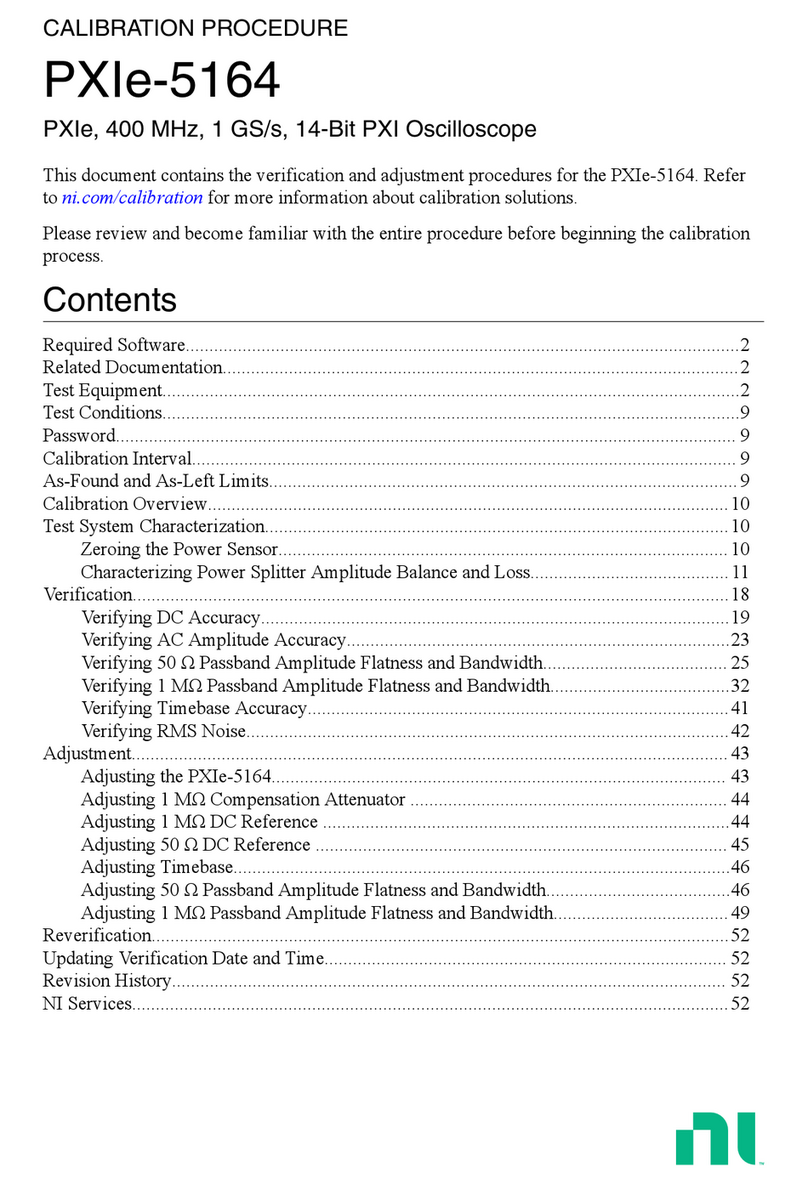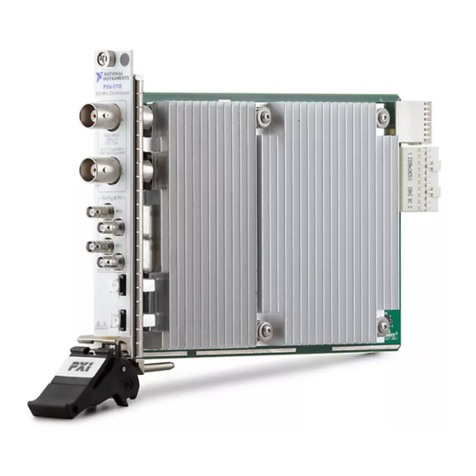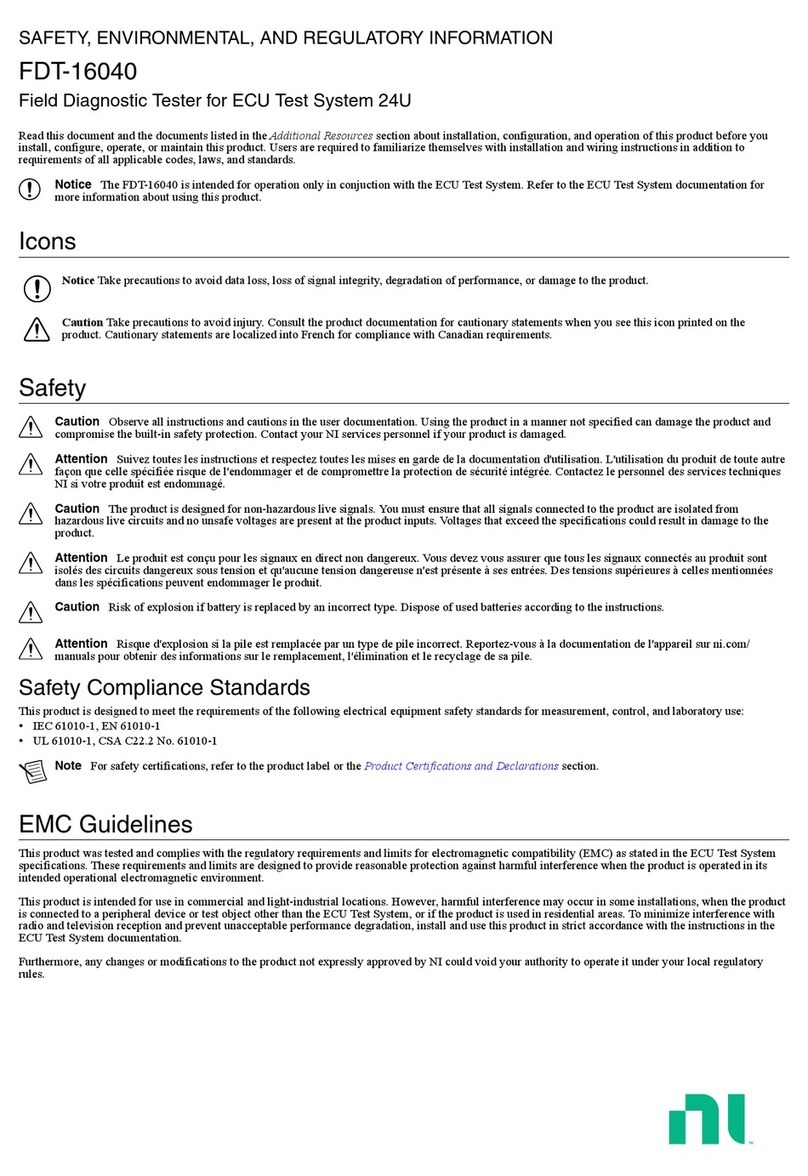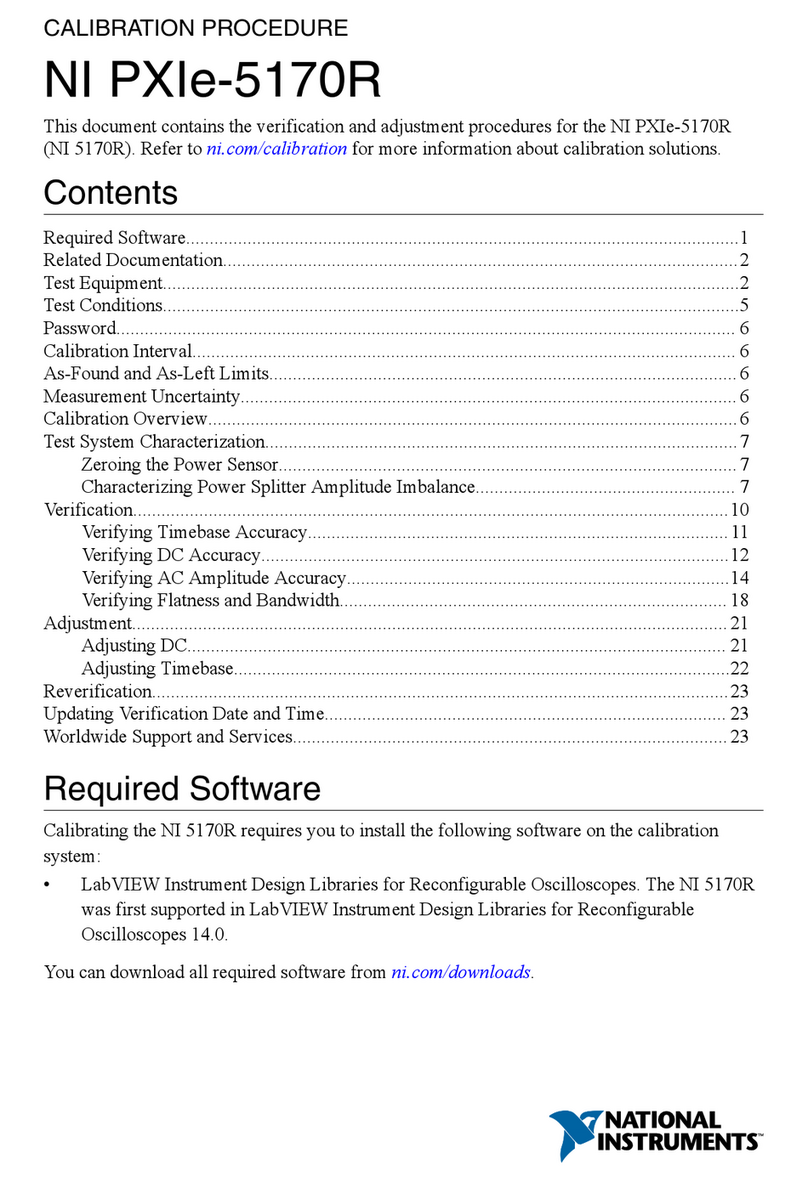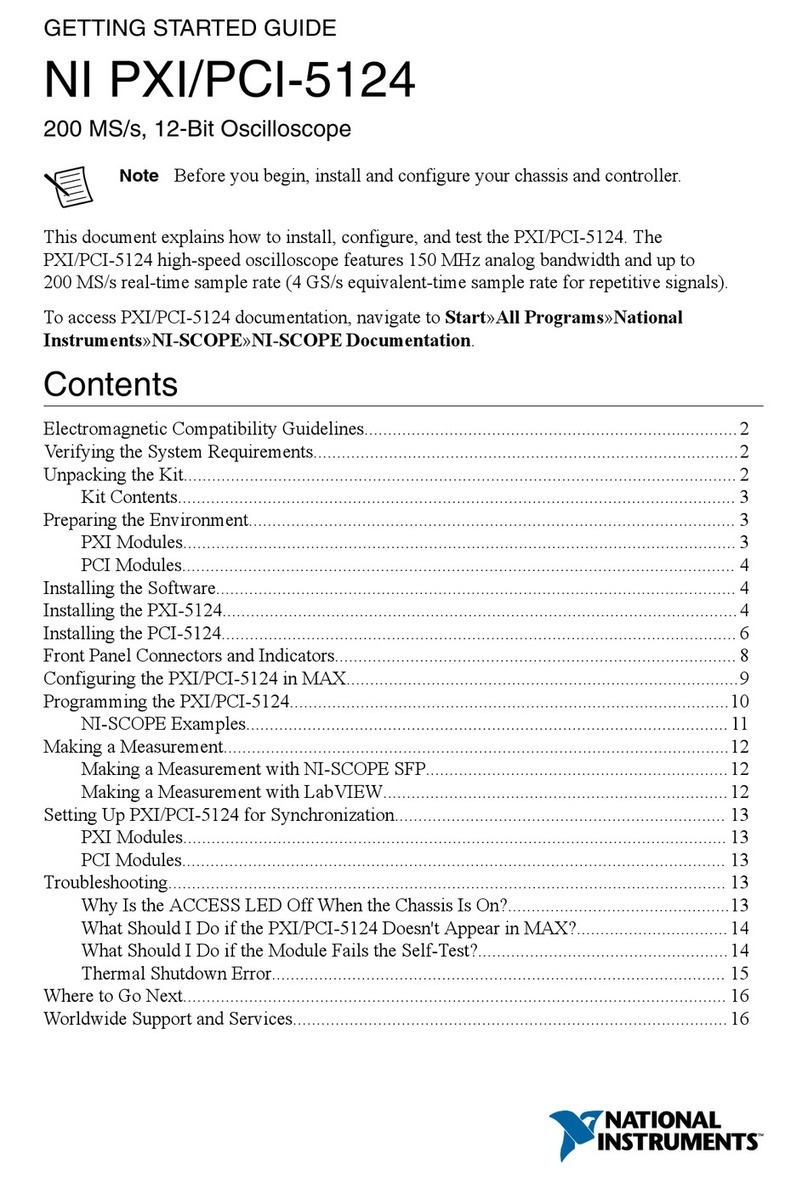
CALIBRATION PROCEDURE
PXIe-5163
This document contains the verification and adjustment procedures for the PXIe-5163. Refer
to ni.com/calibration for more information about calibration solutions.
Please review and become familiar with the entire procedure before beginning the calibration
process.
Contents
Required Software.....................................................................................................................2
Related Documentation.............................................................................................................2
Test Equipment..........................................................................................................................2
Test Conditions..........................................................................................................................9
Password................................................................................................................................... 9
Calibration Interval................................................................................................................... 9
As-Found and As-Left Limits................................................................................................... 9
Calibration Overview..............................................................................................................10
Test System Characterization..................................................................................................10
Zeroing the Power Sensor............................................................................................... 10
Characterizing Power Splitter Amplitude Balance and Loss.......................................... 11
Verification..............................................................................................................................18
Verifying DC Accuracy...................................................................................................21
Verifying AC Amplitude Accuracy.................................................................................24
Verifying 50 Ω Passband Amplitude Flatness and Bandwidth....................................... 27
Verifying 1 MΩ Bandwidth.............................................................................................32
Verifying Timebase Accuracy.........................................................................................36
Verifying RMS Noise......................................................................................................37
Adjustment.............................................................................................................................. 38
Adjusting the PXIe-5163................................................................................................ 38
Adjusting 1 MΩ Compensation Attenuator ................................................................... 39
Adjusting 1 MΩ DC Reference ......................................................................................39
Adjusting 50 Ω DC Reference ....................................................................................... 40
Adjusting Timebase.........................................................................................................40
Adjusting 50 Ω Passband Amplitude Flatness and Bandwidth.......................................41
Adjusting 1 MΩ Bandwidth............................................................................................44
Reverification..........................................................................................................................47
Updating Verification Date and Time..................................................................................... 47
Revision History..................................................................................................................... 47
Product Certifications and Declarations................................................................................. 47
NI Services..............................................................................................................................47













